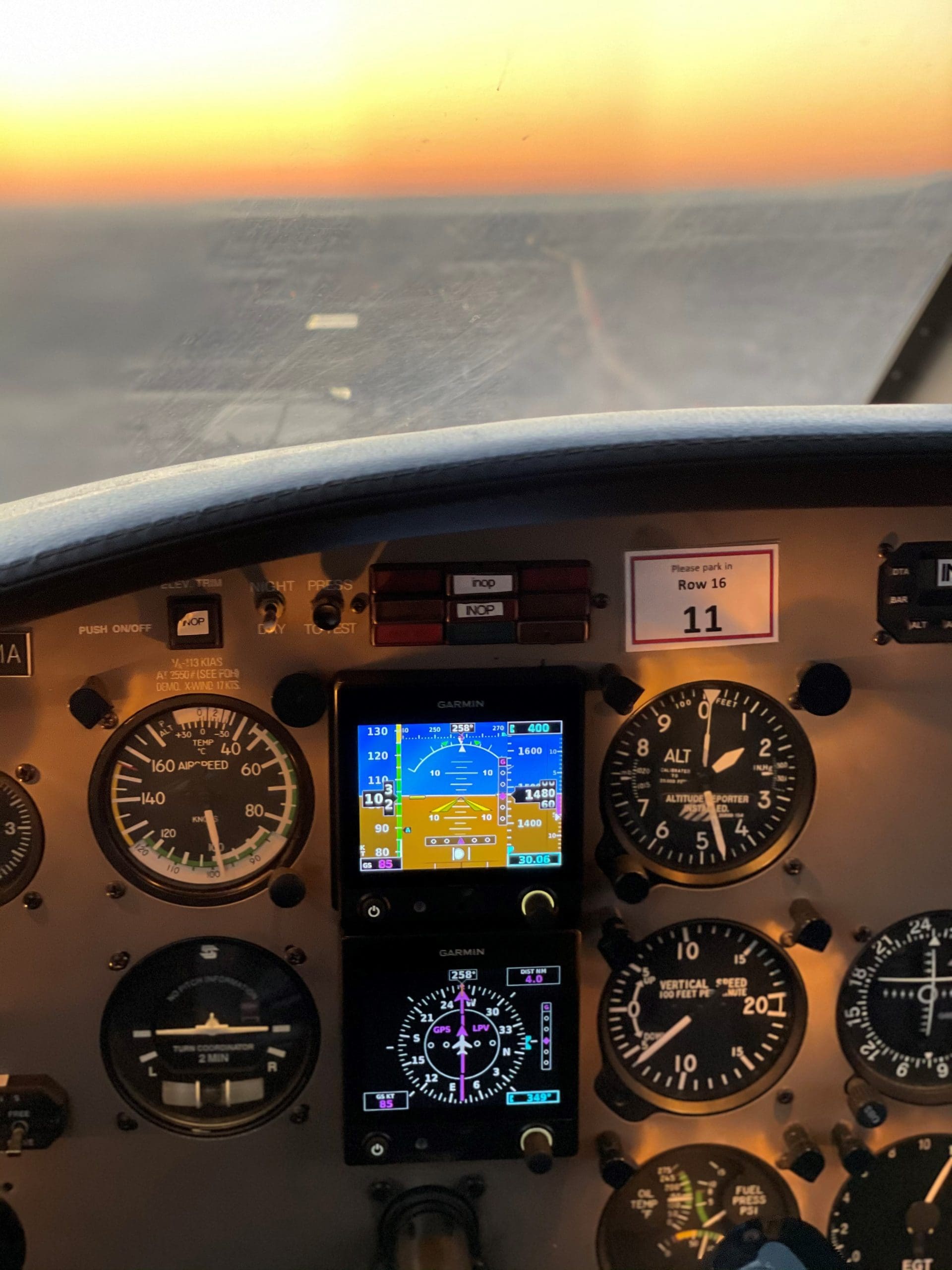Piper Archer III
N354MA
Freedom of Flight!
Range
Ceiling
Cruise

In the PA-28 line up you could simply say that the Piper Archer is the slightly more powerful and more roomy version of the more economical Piper Warrior. With more horsepower to climb out faster and more space in the cockpit, the Archer remains a great aircraft for training, but really shines in the pilot renter arena for those looking for more comfort and power on long cross countries, especially if you have an extra passenger or two. At CFI, N354MA is a beautiful example of the more recent Archer III model and it features a tastefully upgraded instrument panel and well equipped with dual Garmin G5’s and GNS 430’s.
Aircraft Specifications
- 180 HP Engine
Carbureted Lycoming O-360 delivers smooth and reliable performance.
- 50 Gal. Fuel
Combined with a fuel burn at cruise of around 8 GPH, easily reach many popular destinations without the need for a fuel stop.
- 837.31 lb Useful Load
Full fuel and room for two little ones to join along with bags for your next adventure.
- 4 Seats
Adjustable Pilot & Copilot Seats, Fixed Rear Seat, each Soft & Comfortable!
FLIGHT DECK
Avionics
Don’t let grey skies slow you down, IFR ready for that next hard IMC mission.
Classic six place instrument stack and radios.
Real time traffic at the tip of your finger, weather radar uplink, ATIS and more!
AHRS Solid-state sensors to measure aircraft attitude, rate of turn, and slip and skid.

FROM THE FLIGHT DECK
Dual Garmin G5's
The 180 horsepower Piper Archer III, complimented with two of the latest primary flight displays, Garmin G5’s, makes for one great leisure, and cross-country flight plane. Truly a one stop shop for advanced avionics, speed, and great views! The Garmin G5’s are excellent, they feature a top centered PFD used as your attitude indicator, such as the primary flight display of the G1000, displaying airspeed in the format of a tape on the left side, your altitude in the format of a tape on the right, and your conventional attitude horizon reference display in the background. The bottom G5 is the HSI, also known as the horizontal situation indicator, which displays a compass in the background, GPS and VOR over lays on-top of the compass, and bearings accompanied with ground speed on the corners of the HSI. The added situational awareness of the G5’s makes for a more intuitive dream to fly.

LATEST
Downloads
Stay up to date with the latest checklist, weight & balance data and downloadable PDF copy of the POH.

FROM THE FLIGHT DECK
Stall Strips
You may notice a triangular wedge-shaped strip on the leading edge of the aircraft, this is called a stall strip, it is quite ingenious. The purpose of this clever piece of engineering is to improve the predictability and controllability of the aircraft during stalls, resulting in stalls that are less likely to result in a spin, and thus safer stalls.
The stall strip works by initiating airflow separation on a controlled section of the wing at a predetermined angle of attack; stalling the wing root prior to the wing tips, while causing the stall at a slightly higher airspeed, doing so makes possible continued aileron control during scenarios such as one wing dropping more so than the other, while reducing the possibility of entering a spin.
It’s important to note, use of aileron control is not recommended during stalls or during stall recovery. Remember the ailerons deflect airflow in such a way that the angle of attack is increased on one wing, while decreased on the other, normally this results in roll movement of the aircraft, during a stall increasing angle of attack on a wing that is otherwise at, near, or already stalled, may inadvertently cause a spin, and should be avoided. Proper stall recovery requires use of the rudder, which is a control surface that is not stalled and therefore the correct recovery technique for responding to adverse yaw.